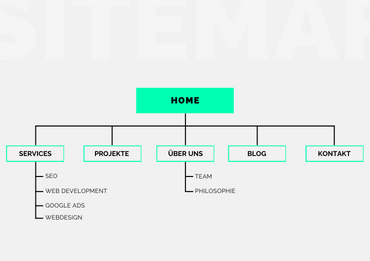What is HTML?
HTML, or Hypertext Markup Language, is the standard markup language for creating websites and web applications. HTML allows web developers to define the structure and content of a web page by inserting elements such as headings, paragraphs, links and images. It enables the creation of hyperlinks that allow users to navigate between different pages. These elements make it possible to create a clear structure and user guidance that facilitates navigation. HTML documents are the basic building blocks of the internet and are interpreted by web browsers to deliver the visual representation of web pages to users.
How Does HTML Work? Structure, Framework, and Elements
HTML operates through the use of tags, which tell web browsers how to display content. A typical HTML document contains the <html> tag, the <head> element for metadata and scripts, and the <body> element, where the visible content of the webpage is defined. Within the body section, various tags like <p> for paragraphs, <h1> to <h6> for headings, and <a> for links can be used.
Basic HTML Elements
An HTML document always begins with the <!DOCTYPE html> tag, which specifies the document type. The basic structure of an HTML page includes <html>, <head>, and <body> tags. The <head> area contains meta information like the page’s title and links to CSS files, while the <body> area contains the visible content of the page, including texts, images, and links.
HTML is the foundation for structuring and presenting web content, using different elements to define various types of content and functionalities. To ease your start, here are some basic HTML tags introduced:
- <html>: The root element that indicates it is an HTML document.
- <head>: Contains meta information about the document, like the title and link tags for external resources.
- <title>: Defines the title of the webpage, displayed in the browser’s title bar.
- <body>: The main part of the document, containing the visible content of the page.
- <h1> to <h6>: Heading tags used to structure content. <h1> represents the most important heading.
- <p>: Defines a paragraph.
- <a>: Stands for a hyperlink, enabling navigation from one page to another.
Besides these, many other important HTML tags are crucial for designing and functionality of web pages, including <img> for images, <b> for bold text, <div> for section containers, <table> for tables, <i> for italic text, and <ul> for unordered lists. These elements significantly extend web design possibilities by offering additional structuring and formatting options.
Structuring and Semantics
Structuring and semantically marking up content with HTML is essential for creating clearly understandable and accessible webpages. The choice of HTML tags should not only be based on their visual outcome but also consider their significance for the content. This significantly enhances the webpage’s readability for both search engines and users.
Effective structuring starts with using header tags (<h1> to <h6>) to organize content by its importance and hierarchy. For example, the <h1> tag marks the main heading of the page, which is a crucial indicator for search engines to understand the page’s main focus. Additional structural elements like <p> for paragraphs, <ul> and <ol> for lists, and <table> for tables help logically and clearly organize information on the page.
Semantic markup goes beyond mere structuring to add an additional layer of meaning to the content. Tags like <article>, <section>, <aside>, and <nav> help define the role of certain content blocks within the document. Using semantic HTML elements enhances understanding of the webpage by screen readers and search engines, and it facilitates content adaptation to different output devices, which is particularly important in responsive design.
By carefully selecting and applying HTML tags based on their semantic meaning, you ensure that your webpages are optimized for both users and search engines. This contributes significantly to improved user experience and stronger SEO performance.
Is HTML a Programming Language?
No, HTML is not a programming language but a markup language. It is used to define the structure and layout of web content. Unlike JavaScript or PHP, it does not contain logic or algorithms typical for programming languages.
What is the Difference Between HTML, CSS, and JavaScript?
- HTML is used to define the structure and content of a webpage.
- CSS (Cascading Style Sheets) is a stylesheet language that designs the appearance and layout of webpages, including colors, fonts, and layouts.
- JavaScript is a scripting language used to create interactive elements on webpages, such as games, responses to user actions, and dynamic data updates.
These technologies work together to create modern webpages and applications, with HTML laying the foundation, CSS defining the presentation, and JavaScript adding interactivity and functionality.
Why is HTML Important for SEO?
HTML is crucial for SEO as it directly impacts how search engines index and understand your website. Properly structured HTML documents with semantically correct tags facilitate search engine crawlers in parsing page content and determining its relevance to search queries. This includes using the appropriate tags for headings, paragraphs, and other elements, as well as optimizing metadata like titles and descriptions for search queries.
Moreover, HTML is instrumental in ensuring your website is accessible and user-friendly, which are factors considered by search engines in ranking pages. By following HTML best practices, you improve both the user experience and your website’s visibility in search engine results.
Tips for Using HTML in Your SEO Strategy
Optimizing your website for search engines is a crucial step to improve the visibility and accessibility of your content on the internet. An effective SEO strategy starts with a sound application of HTML. By using HTML tags strategically, you can clearly communicate the structure of your web pages, which forms the basis for better ranking in search results. Here are some proven tips on how to optimally use HTML in your SEO strategy:
- Use semantic HTML tags: This helps search engines understand the structure of your page and the significance of its content.
- Optimize the <title> and <meta> tags: These elements are crucial for onpage SEO, as they are displayed in search results.
- Structure your content with header tags: A logical hierarchy using <h1> through <h6> improves readability for both search engines and users.
- Utilize alt texts for images: Descriptions for images (<img> tag) enhance accessibility and image search.
Conclusion
Understanding HTML and its application is essential for anyone involved in web development or digital marketing. It forms the backbone of web content, enabling the creation of structured, accessible, and SEO-friendly websites. As you delve into web development, mastering HTML will provide a solid foundation for exploring more complex languages and technologies, ultimately enhancing your ability to create effective and engaging online experiences.



